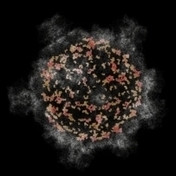

“The new Curve options in the Extrude Face Options window, which allow you to generate and position a curve automatically.

The Interactive Split Tool, which allows you to split faces on a polygon mesh.”Įxtrude has also seen some new changes where there are now new curve options in the EXTRUDE FACE options window, which will let you GENERATE and PLACE a curve automatically. “The Split Mesh with Projected Curve option, which allows you to split and detach edges on a polygon surface. This feature will kind of flow into the new Split Mesh options in Maya 2012 where you are now able to split a mesh with a projected curve. Create curve from Edges has always been a bonus tool in Maya for years and years, now being able to project a curve onto a polygon surface is a step up from that dated Bonus Tool workflow. You can now locate missing reference files, restore them to original referenced location, and then click Retry to load them into the scene.”Īpart from some interface workflow enhancements, Maya 2012 sports some new modeling features such as the ability to project a curve on a polygon surface using the new PROJECT CURVE ON MESH. “A Retry option has been added to the Reference file not found window. Maya 2012 also has added a “RETRY” option for missing reference files which allows you to locate missing reference files, copy them to the original location and then RETRY to load them back into the scene all quite easily. Set Current provides a visual indicator and control for the current namespace.”

Collapse to Child removes empty ancestor namespaces.

Select All Empty makes it easy to select and operate on all empty namespaces. “NameSpace Editor improvements Other improvements include: List Contents now displays the list of objects in a pop-up window rather than just in the Script Editor window. There are also some changes to the NAMESPACE EDITOR, which now gives you more control for creating and managing the namespace organization of scene objects with a new tree view display. You can also add new custom directories to your Maya project using the Add new file rule command.” You can use the default locations or specify custom locations that better correspond to your production pipeline. The Project Window also provides customizable directories for translator data. A new browse feature lets you quickly navigate to the desired location for each project directory. You can specify different locations for each primary project directory and secondary project sub-directories, as well as provide custom directory names. Secondary project locations are sub-directories created in the primary locations to provide additional project management. “Primary project locations provide directories for essential project data such as scene files, texture files, and rendered image files. When you create a new project from the Project Window, Maya now organizes project files into primary and secondary project locations. There are quite a few notable changes to Maya 2012, including some changes to the PROJECT WINDOW, which makes it easier to organize and customize Maya project files with the additions of PRIMARY and SECONDARY project locations. Upon first glancing it appeared to be an anemic update, boasting a few improvements to the viewport, animation and nDynamics however on closer inspection, Maya 2012 is a feature rich and enhancement packed update. Autodesk announced at the GDC… well, everything really including Softimage 2012, Mudbox 2012, 3Ds Max 2012, MotionBuilder 2012, and of course Autodesk Maya 2012 as well as the Entertainment Creation Suite Bundles… also 2012. If you have ever done a search for Maya 2012 at all, I share your frustration in all the results that predict the end of the world – surely there is an inkling of a snippet of information available on the new Maya 2012… but until yesterday, sadly no.


 0 kommentar(er)
0 kommentar(er)
